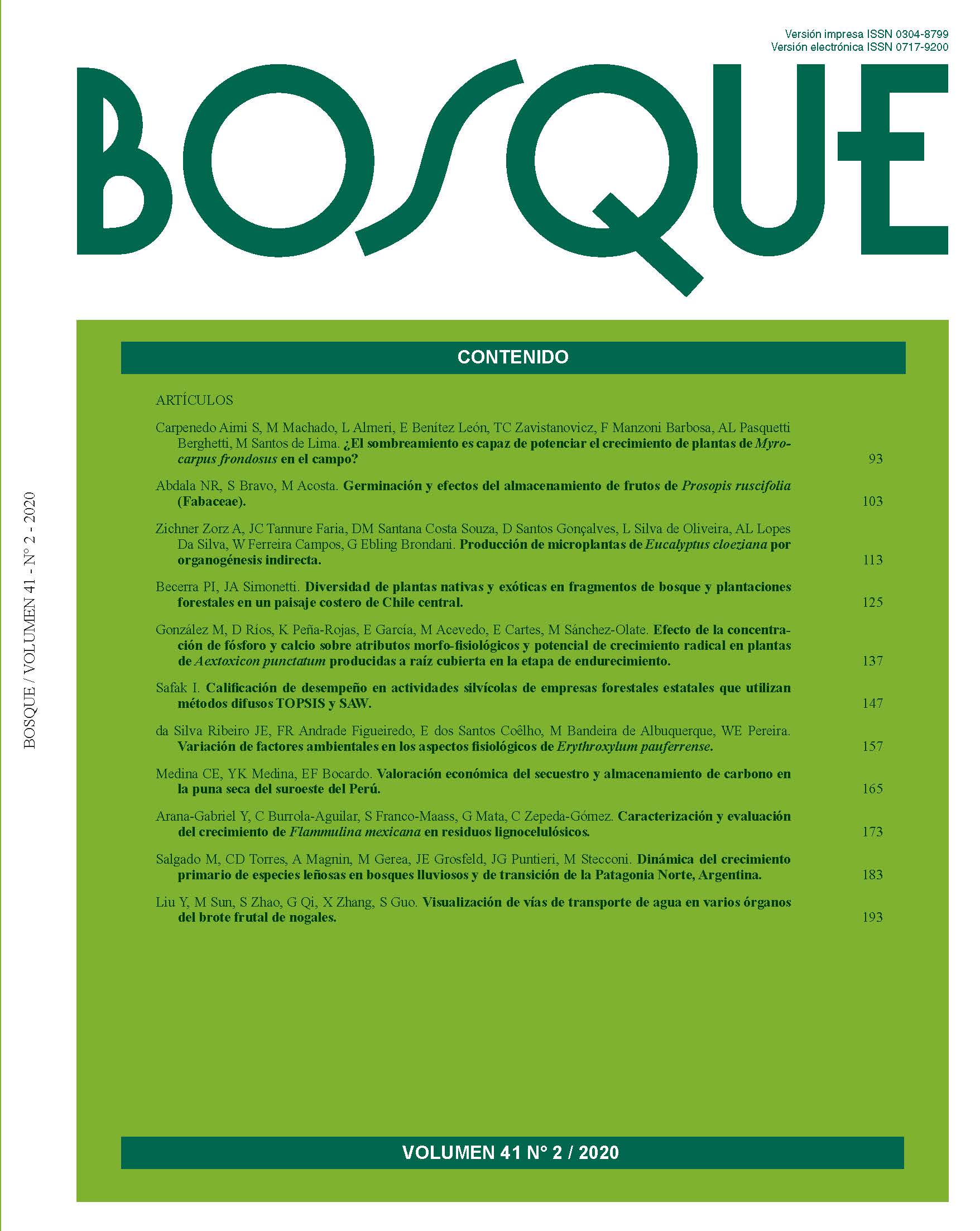Native and exotic plant species diversity in forest fragments and forestry plantations of a coastal landscape of central Chile
Main Article Content
Abstract
Native forest replacement by exotic forestry plantations and fragmentation may have different consequences for biodiversity. In the transition zone between the Mediterranean and Temperate Regions of Chile, native forests have been replaced and fragmented, and currently are surrounded by Pinus radiata plantations. However, the effects of these changes on biodiversity are still poorly understood. In this study, we evaluated how the replacement and fragmentation of these native forests have affected plant communities of a coastal area of the Maule Region in central Chile. We compared plant communities between three types of landscape units: pine plantations, small forest fragments and a continuous native forest. On each landscape unit, we evaluated richness and composition of native and exotic species on 100 m2 plots located in two positions: edge and interior. Native species richness decreased and exotic invasion increased in plantations compared to fragments and continuous forests. Fragmentation increased invasion of exotic species, nonetheless did not affect native species richness. Small fragments were significantly similar to the continuous forest in native species composition (~52 % similarity). Exotic species composition of the plantation was significantly similar to edges of fragments (> 53 % similarity). Our results suggest that, although several native species may inhabit pine plantations, these are not able to support as many native plants as do native forests. Furthermore, plantations facilitate exotic invasion. Despite that fragments have been invaded, the fact that many native species are growing there suggests that small fragments of native forest may be considered as high-value areas for conservation.

